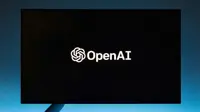IS executioner ‘Jihadi John’ killed in drone strike
14 Nov 2015
The United States announced on Friday it was "reasonably certain" a drone strike in Syria had killed Jihadi John, a British citizen who became the public face of Islamic State and a symbol of its brutality after appearing in hostage execution videos.
US and British officials welcomed the apparent success of the operation targeting Mohammed Emwazi, saying his death, if confirmed, would be a big blow to Islamic State's image and prestige even though Emwazi was not a significant tactical or operational figure in the militant group.
"If this strike was successful - and we still await confirmation of that - it will be a strike at the heart of ISIL (Islamic State)," British Prime Minister David Cameron said in a statement outside his official London residence.
The US-British missile strike believed to have killed Emwazi was months in the preparation but came together at lightning speed shortly before midnight on Thursday, as two US MQ-9 Reaper drones and one British MQ-9 cruised above the Syrian town of Raqqa, officials said.
US Army Colonel Steve Warren, a spokesman in Baghdad for the US-led coalition against Islamic State, said a Hellfire missile was fired at a car believed to be carrying Emwazi and another man. The missile killed the people riding in the car, he said.
"It's still a little early, but we are reasonably certain that we killed the target that we intended to kill, which is Jihadi John," Warren told reporters, adding the verification process still had to be completed.
An Islamic State fighter confirmed a strike took place in Raqqa, the organization's headquarters in Syria, and killed several "brothers" and civilians but added via the internet that "there is a decision not to announce names".
Rami Abdulrahman, director of the Syrian Observatory for Human Rights, a monitoring group, said a car carrying four Islamic State leaders, including one Briton, had been killed in the strike in Raqqa. He quoted sources in Raqqa as saying Emwazi's body had been blown apart.
While experts questioned whether Emwazi's death would have much impact on Islamic State since he was not a senior military figure, Cameron described him as a "barbaric murderer" and Islamic State's "lead executioner".
"It was the right thing to do," Cameron said.
E?mwazi took part in videos showing the murders of US journalists Steven Sotloff and James Foley, US aid worker Abdul-Rahman Kassig, British aid workers David Haines and Alan Henning, Japanese journalist Kenji Goto, and other hostages.
Shown in the videos dressed entirely in black, a balaclava covering all but his eyes and the bridge of his nose, Emwazi became a menacing symbol of Islamic State brutality and one of the world's most wanted men.
He used such videos to threaten the West, admonish its Arab allies and taunt US President Barack Obama and Cameron before hostages seen cowering in orange jump suits.
Born in Kuwait in 1988, Emwazi was brought to Britain by his family when he was six years old and graduated in computer programming in London.
He appears to have come to the attention of the British authorities by 2009, when he was barred from entering Tanzania at the request of British security services.
The British government also believes Emwazi was a member of a network convicted of trying to bomb London's underground railway in 2005, two weeks after an attack by another group killed 52 people.
White House spokesman Josh Earnest told reporters the operation against Emwazi did not require prior presidential approval because it was conducted under guidance Obama laid down for the fight against Islamic State, which includes going after their leaders. He said Obama was briefed on the operation on Thursday.
The strike came as the US president is trying to boost his country's efforts to defeat Islamic State, including sending a small contingent of US special forces troops to Syria.































